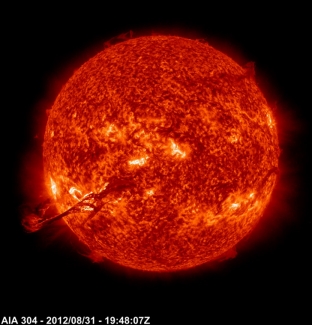The Sun isn’t working the way we thought it did. Many astrophysicists haven't actually understood one aspect of how the Sun worked––until former senior research associate Nick Featherstone and senior research associate Brad Hindman set the record straight.
Stars like the Sun have to get rid of the heat generated by thermonuclear reactions in their centers. The Sun’s secret is vigorous convection, particularly in the outer third of the Sun closest to its surface. Like a pot of boiling water, hot fluid moves upward and cooler fluid moves downward, carrying heat outwards toward the surface of the star. For a long time, astrophysicists thought these motions came in two different sizes called granules (because these megameter-sized structures looked like grains of rice through early telescopes) and giant cells.
The trouble with the giant cell idea is that while granules appear on the Sun’s surface, giant cells have never been seen in spite of the fact astronomers have been looking for them for a long time. And, if giant cells exist, they would be 200 megameters1 wide, which is definitely large enough to be detectable. For instance, the largest cells seen in the Sun, called supergranules, are only about 30 megameters wide. Featherstone’s and Hindman’s new theory explains why supergranulation appears and why giant cells are absent.





